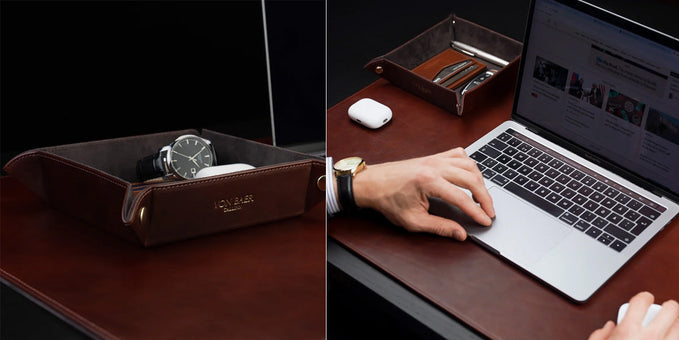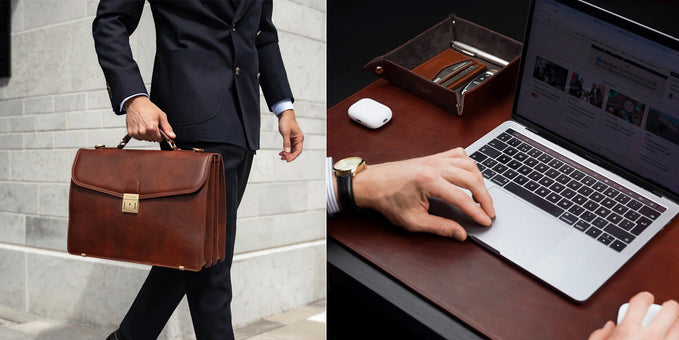PU leather

What Does “PU Leather” Mean?
PU leather, short for polyurethane leather, is a synthetic material crafted by coating a base fabric—typically polyester or cotton—with a layer of flexible polyurethane.
This method creates a material with a smooth, leather-like appearance without using animal hides, appealing to those looking for a vegan and cruelty-free option.
That means it's not real leather; it is fake leather.
- Synthetic and Consistent: Unlike bonded leather, which contains some real leather mixed with polyurethane, PU leather is fully synthetic, making it more uniform and predictable in quality.
- Controlled Design: Manufacturers can consistently control its thickness, color, and texture, resulting in a polished look that lacks the natural variations of genuine leather.
For those seeking high design consistency in items like bags or furniture, PU offers a reliable, low-cost alternative.
Embossing: If you’re looking for a specific texture, note that PU can be embossed to mimic natural leather grains or even exotic patterns.
PU leather goes by various names. These include bicast leather, split leather, bonded leather, reconstituted leather and corrected grain leather.

What are the pros and cons of PU leather?
Pros of PU Leather:
- It's more affordable than genuine leather and easier to produce.
- It’s simple to clean, water-resistant, and 100% PU is vegan-friendly.
- This material supports various styles and colors without drying out.
- It's more sustainable as it requires fewer resources to manufacture.
Cons of PU Leather:
- Some feel PU leather appears synthetic and lacks authenticity.
- It isn’t breathable and may smell of plastic or chemicals.
- It's prone to cracking and tearing and lacks the durability of real leather.
- Unlike genuine leather, PU doesn’t develop a patina over time.
- Some PU products may include leftover animal leather, so not all are fully vegan.
- While it’s resource-efficient, PU’s plastic component doesn’t decompose, impacting sustainability.

Types of PU Leather: Soft vs Premium
Different types of PU cater to different needs, and understanding these distinctions can help you choose wisely.
- Soft PU: This type is typically thinner and more flexible than standard PU, allowing it to drape and move more naturally. It’s especially popular in clothing items and bags where comfort and flexibility are essential. However, it doesn’t have the durability of thicker PU, so it’s ideal for items that won’t face constant friction or rough handling.
- Premium PU: Often incorporates extra treatments to enhance strength and realism. High-quality finishes, such as hand-feel coatings or dual-layer treatments, help replicate the rich texture of genuine leather while providing improved resistance to scratches and color fading. Premium PU is often used in upscale furniture or handbags, where both a polished look and long-lasting wear are desired.
Real-World Application:
- Soft PU leather is excellent for jackets or travel bags due to its flexibility and lightweight feel, but keep in mind that frequent bending or stretching may eventually cause cracking.
- Premium PU works well for statement pieces, like a designer bag or lounge chair, offering a sophisticated look with enhanced durability. Look for terms like “enhanced coating” or “extra durability treatment” in product descriptions to spot premium PU.
Learn more about types of leather here.

How to tell if something is PU leather
If you are considering buying a product that you think may contain PU leather, look at the tag.
If the tag doesn’t tell you, or if there isn’t one, you may be able to tell by the price tag.
PU leather tends to be much more affordable than genuine leather as it’s easier to make.
PU leather also has a chemical or plastic smell you won’t notice when wearing real leather.
You can also carry out a water test to find out if the product you’re examining is fake or real leather. If the leather is genuine, the water will be absorbed.
This is similar to faux leather.
PU leather does not absorb water.
Some people can tell the difference between PU leather and other kinds of leather simply by looking at the material. If your product is real leather, it is likely to come with imperfections and a genuine grain. PU leather tends to look fake and normally has a patterned texture look.

What is PU Leather Made of, and How Does it Differ from Genuine Leather?
Material Structure: The structure of PU products sets them apart. The base fabric provides strength, while the polyurethane coating gives it a sleek finish and water resistance. PU-coated leather is made by layering polyurethane over the fabric and then stamping or embossing the surface to create a leather-like grain. This technique achieves a convincing appearance while affecting the material’s durability and feel.
- Care Requirements: Compared to genuine leather, PU is much lighter and requires less care, as it doesn’t need conditioning to prevent drying or cracking.
- Non-Porous Surface: Lacking genuine leather’s porous quality, it won’t “breathe” or develop a patina over time.
For products like outdoor items or high-contact areas, genuine leather is more resilient to wear and tear, though it requires regular maintenance.
Practical Insight: If you’re purchasing a PU item for daily use—like a handbag or office chair—look for details on the coating thickness and embossing depth. Thicker coatings and deeper embossing can lend more durability and make PU items look convincingly real. These subtle features help higher-quality PU products hold up better over time.
Is PU material vegan-friendly?
In its real form, PU leather is 100% vegan. This is because it is essentially a fusion of various artificial chemicals.
However, some people use the term PU leather very loosely, with split leather often referred to as PU leather.
Split leather is a material that takes the leftovers of genuine leather production and is coated with polyurethane.
This means it is a fusion of PU and genuine leather. If you are ethically minded, it may be very important for you to check if your product really is PU leather.
Buying PU leather can help people avoid contributing to the death and other suffering of animals (source).

PU Leather in Shoes: What Does “PU Upper” Mean?
In footwear, the term “PU upper” is used to refer to shoes with polyurethane leather on the outermost material (the entire part of the shoe that covers the foot).
PU uppers are valued for their water resistance and sleek look, making them a good choice for everyday, fashion-forward footwear or casual wear. However, they’re less breathable than genuine leather, which may impact comfort in warm or high-activity situations.
For certain types of shoes—like rain boots, winter wear, or fashionable sneakers—PU uppers work well since they resist moisture and are easy to wipe clean. Unlike genuine leather, PU uppers don’t conform to your foot over time, so they may feel stiffer. High-end brands often add extra padding or structure to enhance comfort, so if that’s a priority, look for PU shoes with cushioned or ergonomic insoles.
Pro Tip: If you’re considering PU shoes for daily wear, examine the product details to check for “breathable linings” or “vented panels,” which can improve air circulation and prevent discomfort. Shoes designed with layered materials or mesh panels can counteract PU’s low breathability, enhancing comfort without sacrificing style.

PU Leather in Bags: Why It’s Popular and Practical
In the fashion world, PU’s versatility makes it a popular choice for bags and wallets.
The lightweight nature allows for more innovative designs, such as structured bags or tote styles that wouldn’t be possible with heavier genuine leather. Its water-resistant quality is especially valuable in bags, as it provides protection against accidental spills or rainy days.
That said, the type of PU used in bags matters. Higher-quality PU will offer a more convincing texture and longer lifespan, especially if the bag is for daily use.
For a statement bag that doesn’t see heavy wear, a softer PU may be enough, but for a work bag that carries significant weight and faces frequent handling, premium PU provides the additional durability needed to withstand frequent use.
Practical Buying Tip: If you’re purchasing a PU leather bag as a functional accessory, check for reinforced stitching and sturdy hardware. Lower-quality PU bags may use plastic zippers or weak stitching that reduces their longevity. Look for lined interiors as well, which add structure and help distribute weight better.
What is the manufacturing process of PU leather?
A considerable amount of chemicals and petroleum are used to create PU leather. The process involves four steps.
- Starting with the base fabric
- Application of polyurethane coating
- Coloring the material
- Final texture for finishing is added
Is PU leather always fake?
If PU leather is 100%, this means it is fake leather due to the fact it’s made from 100% plastic material.
There is no genuine animal hide involved. However, some PU leathers do contain animal parts and are therefore only semi-fake. Some argue that these products are hybrids as they are part-animal and part-synthetic.
No PU leather can be regarded as pure leather. If the word “pure” features on the tag, it is not completely made of animal hide.
We have more info on what real leather is here, and how to tell if it's real here.
PU Leather vs PVC Leather: what is the best?
PU and PVC materials are both manmade. They aren’t derived from animal skins, although the end product can contain some animal hide.
To make PU leather, polyurethane is applied to the top of the leather material. The PU offers a fantastic finish. This also ensures that the material is flexible. However, PVC leather comes with a foam layer as well as a plastic coating.
Durability
PVC leather is regarded as more durable due to the fact it comes with a foam layer. PU leather is thin and well-regarded due to its flexibility. This explains why it is commonly used to make clothes. PU tends to wrinkle over time. PVC is known for its ability to withstand wear and tear as s well as extreme weather.
Breathability
PU leather is more breathable due to the fact it is thinner. It can be hard for air to pass through PVC leather as it has too many layers. PU leather is more commonly found in garments like jackets. PU leather is also more porous than PVC leather, which makes it highly suitable for clothes production.
Nonetheless, PU leather is also absorbent due to its pores. This means products made from PU leather are susceptible to stains. This is why furniture makers tend to use PVC leather rather than PU leather.
PVC is the most durable of the two options due to its various layers and lack of pores. It is often used to make shoes and upholstery. Both products can be subject to considerable wear and tear. PU is often regarded as the better option for clothing due to its breathability and flexibility.
Is PU leather waterproof?
PU leather is water-resistant but not waterproof due to its porous structure.
Often blended with materials like polyester, cotton, and rayon, PU leather offers varying water resistance but no true waterproofing.
Genuine leather also resists water but is not waterproof; applying wax or waterproof spray can enhance its protection.

Author: Albert Varkki
Albert Varkki is the co-founder of Von Baer. He understands leather products as a consumer, supplier, and a manufacturer, helping you with the inside knowledge you need, to choose the perfect leather product for you.
We strive for the highest editorial standards, and to only publish accurate information on our website.
Leave a Comment
Your email address will not be published.






